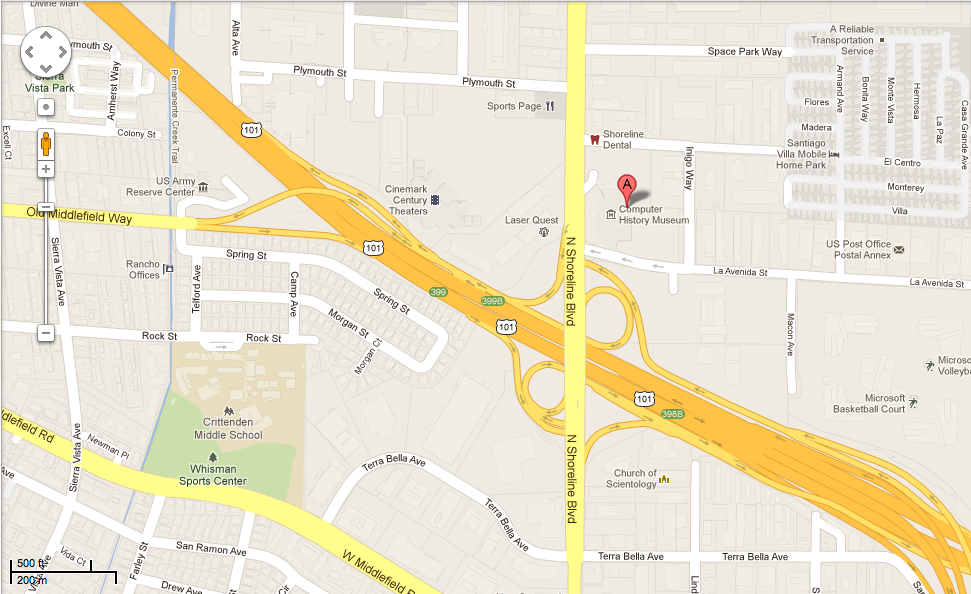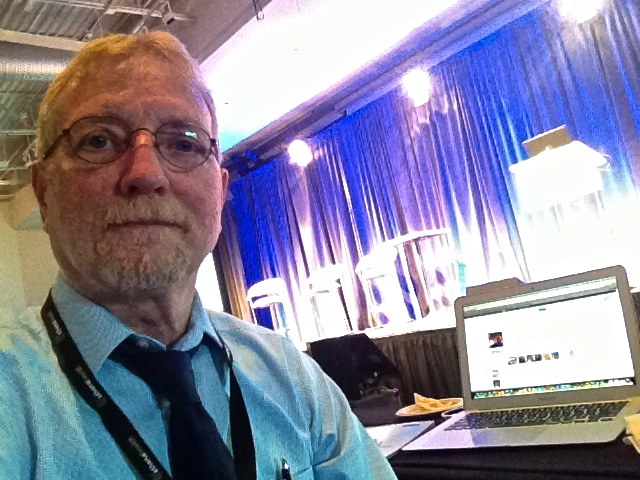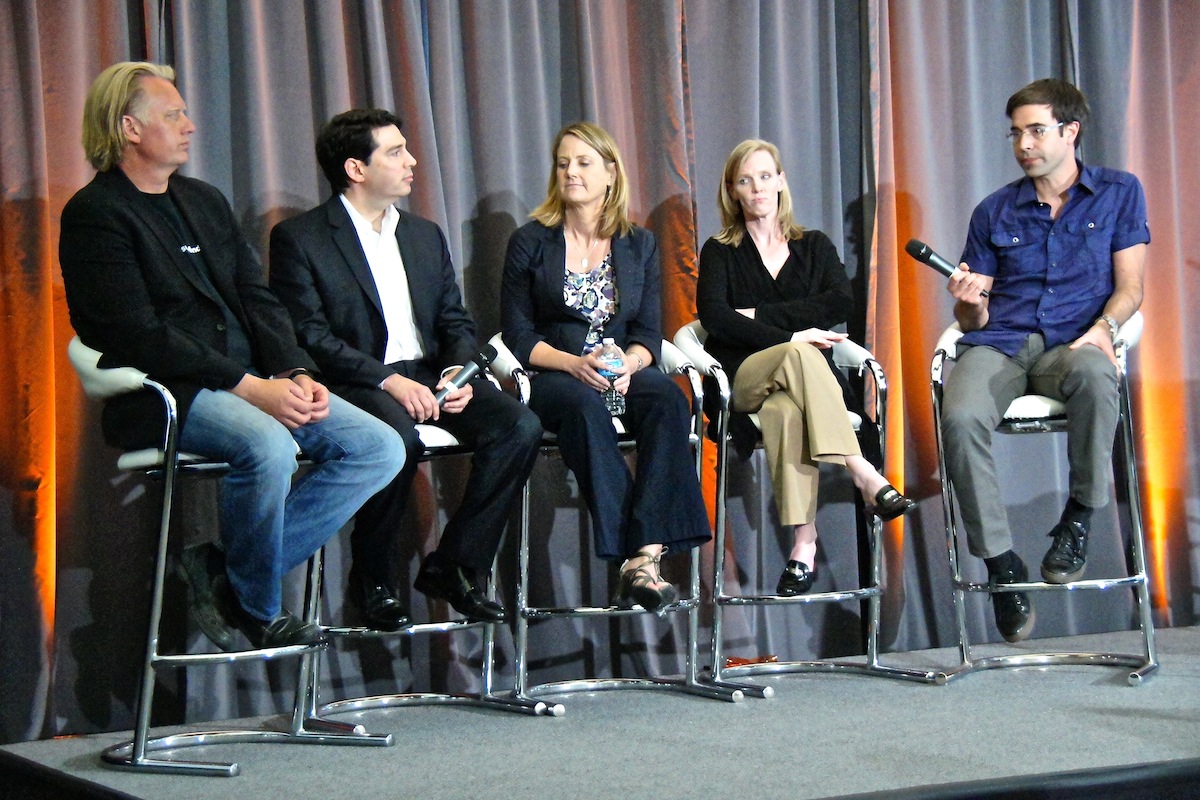Up at 5 a.m. (ugh), zip down the 680 from Walnut Creek to the Nimitz and over to the 101 and the Computer History Museum for a day in UberGeekIstan with the Cyberscenti.
So, "refactored" is software development slang basically synonymous with Lean/Rapid Cycle PDSA, maybe even "Agile." This conference is focused on helping health IT developers become more adept at shaping the future of health care via information technology advances. As reported in the
Sacramento Bee:
"Health:Refactored not only serves as an impetus for developers and designers to leverage their skills and creativity to build and create, but it also provides a portal into the future of health technology," said Indu Subaiya, Co-Chairman & CEO of Health 2.0.
Here are the predictions:
- "Technology will catalyze dramatic system-wide cost savings and efficiencies. Out of $500 billion spent annually in the U.S. on doctor visits, $125 billion translates into unnecessary costs since 25% of the visits are strictly informational. Technology will serve these patients the information they need without the physical appointment." --Sean K. Mehra, Head of Product, HealthTap
- "In 10 years, human-centered data collection of medical records, observations, labs, etc., will go away in favor of body-worn health sensors that will be woven into fabrics, built-into our mobile phones, integrated into homes (e.g. toilets, sinks, etc.), and even embedded under our skin." -- Shahid Shah, HIT Expert/CEO, Netspective
- "The 'wall-less hospital' will meet the empowered patient. As sensors and devices increase their power and accuracy, doctors will be able to monitor and adjust treatment approaches in real-time." -- Jan Gurley, MD, Physician and App Designer, DocGurley.com
- "Food, physical activity and sleep recommendations will be personalized based on health risks, biomarkers, environmental factors, preferences and budget. They'll be prescribed by doctors and dietitians in the grocery store assisted by cutting-edge health technologies, and directly by apps." -- Jason Langheier, MD, MPH, CEO & Founder, Zipongo
- "Telemedicine will allow hospitals to extend care well beyond their four walls. Consumer diagnostic devices and wearables will empower patients to proactively monitor and manage their health and physicians can transition from passive managers of health to active, ever-present participants in patients' health." -- David Chao, Senior Product Manager, MuleSoft
- "In 5 years, when data is more portable and expectations are that data follows me and my care, rather than hide from my view....well, then things gets really interesting! Then we can really start getting deep, meaningful insights from all our shared data, and the pace of innovation in digital health will grow exponentially." -- Geoffrey Clapp, Co-Founder, Better
- "We will shift into a synchronous 'care stream' which values preventative care over treating symptoms." -- Mike Cuesta , Director of Design and Community, CareCloud
___
UPDATE: SHOTS FROM MORNING ONE SESSIONS
Some random pics...
 |
| Above, Health 2.0 co-founder Indu Subaiya |
 |
| L to R: Jean Luc-Neptune, Jessica Goldband, and Edbury Enegren |
 |
| Brian Sivak |
 |
| I missed this fellow's name. He's with Microsoft. Wincingly, his slide deck would not launch. He made some anxious remark about "all of the whiteboards in the room" -- i.e., all of our MacBooks. |
 |
| Atlantic Monthly journalist and author David Ewing Duncan |
 |
| Health 2.0 co-founder Matthew Holt |
 |
| Ethan Prater, Castlight Health |
 |
| John Mattison, MD, CMIO Kaiser |
 |
| Brad Weinberg, MD, Venture Capital Investor |
 |
| Again, Health 2.0 co-founder Indu Subaiya |
 |
| Dr. Jean-Luc Neptune of Health 2.0 |
 |
| Edbury Enegren, Health 2.0 |
 |
| Esther Dyson |
 |
| Jim Kean |
A great first day. I dressed "business professional/casual" and felt
way over-dressed. While the look was totally loose and hip, the aggregate intellect on display was both humbling and inspiring.
Nice summary here by Kim Krueger:
If Subaiya’s survey is any indication, the Health:Refactored crowd is pretty heavily weighted on the technical and entrepreneurial side with maybe a slightly smaller representation of designers. Attendees also seemed evenly distributed between health care veterans and health care newbies (exciting, welcome new friends!). These buckets were hardly mutually exclusive though as most everyone seems to dabble in business, and the brave seem to dabble in everything.
The questions continued throughout the day, and with the right combination of imagination, lighting, and squinting you could almost see the raised hands shape shifting into ven diagrams. We are software developers and MBAs, but on a broader scale we are patients and stakeholders interested in fundamentally changing the world...
Indeed. The fermenting mixture of optimism and applied expertise was palpable.
KP's Dr. Mattison made some interesting observations. First he noted that his son, just graduating medical school, had received virtually the
same medical education that
he had. The pedagogy is stuck in neutral. Brings to my mind some observations of Messrs Weed in "
Medicine in Denial"
VIII. Medical Education and Credentialing as Barriers to Progress
A. Extending the health care reform agenda to medical education and credentialing
1. A century of stagnation
...Were Flexner to return today, he would find that current knowledge has he power to confer vastly greater advantage than it did a century ago. But he would not find that society reaps a greater fraction of that advantage. “Between the health care that we have and the care we could have lies not just a gap but a chasm,” the Institute of Medicine has found.
Failings in medical education and credentialing are a central reason the chasm exists. These failings are rooted in Flexner’s embrace of the university model of formal education. This model was seen as the only way to bring scientific advances to medical practice...
2. The medical school experience
According to the Institute of Medicine, “many believe that, in general, the current curriculum is overcrowded and relies too much on memorizing facts” and that “the fundamental approach to clinical education has not changed since 1910.” [pp 195 - 197]
Beyond that, looking forward Dr. Mattison proffered five fundamental areas of improvement concern:
- The prevailing perverse incentive model;
- Uncoordinated care / lack of prevention effort;
- Opacity of pricing;
- End of Life care (he cited the UK's much higher "% of deaths at home");
- Lifestyle disorders.
Pretty much a recitation of the litany we've mostly all increasingly heard across the past 4-5 years.
__
More shots...
 |
| Joe DeLuca, Health Care Investment Visions. Joe said "there's not much new in ObamaCare," and admonished the developer community regarding the potential for patient harm via HIT done poorly. |
 |
| Jeff Schox of Schox PLC Patent Group. Excellent speaker. Looks like he's 16. He presented on patent / intellectual property protection issues for progressive health/medical apps. |
 |
| Deven McGraw, CDT. Nice to see and talk with her again. |
 |
| My new friend Leslie Kernisan, MD, MPH, Geriatrician, frequent THCB contributor |
SATURDAY 18th UPDATE: JEFF SCHOX
I'm watching his 1st Patent / IP lecture. Excellent. Free.
Share Information, Sell Services.
___
More to come...





































Great shots Bobby!
ReplyDelete